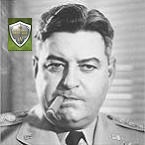ORIGINAL: Curtis Lemay
I can't agree with that. It was more like this: Before you add that new rec-room to the house, you first must fix the gaping hole in the roof and all the broken windows. ACOW had huge problems that needed fixing and that came first. We thought we were finally at the point by 3.5 that some serious expansion could be addressed. Unfortunately, that's when Ralph's issues seem to have cropped up. We still don't know why.
...
I think that's a stretch. Games are still being played; scenarios are still being designed. I fully expect 3.5 to be completed. I just can't say when.
Indeed it is and they are. I fall back on my assertion that TOAW solely occupies its unique niche. This is both the source of its continuing popularity and the origin of market vulnerability. But I also agree with Baris in that it is falling short not only of its potential, but the potential of that niche. Scenario designers have grumbled for years under restrictions which date back to the TOAW 1. Development of the game, both old and new, has progressed little in the direction suggested by its common use. So while it may be impolite to state, this failing belongs early to Norm Koger and later to Matrix.
Koger's releases followed the standard pattern for many wargame "engines." Add some new scenery, some new scenarios and some new equipment and re-release it. This is the pattern that has worked for wargame producers since the 1970's. It is assumed to be THEEEE way to stay afloat. But I would argue that this is a unique niche deserving a (risk on!) unique approach. But that's another discussion.
ORIGINAL: Curtis Lemay
Hmmm. You mean like a made from scratch TOAW IV? I wonder...
This is the tantalizing prospect, isn't it? In it lies the hope that TOAW will -finally- go where no computer wargame has gone before. A universal game design system for the modern era. (Well, some have gone there, but not in a compute-powerful, networked world.)
Does this sound more like "vision" and "direction" than repairing a hole in the roof over six years?
I can lay out with some precision the matrix (ooh, a pun) of possibilites which wraps my relative ignorance. Some of it revolves around the legal status of "Norm Koger" and "The Operational Art of War." Firstly, a living person's name is never free of legal ramifications. Period. Secondly, the game title is always "Norm Koger's TOAW", so I'm guessing there are some persisting legal hooks. Perhaps, Koger still gets a cut on sales. I don't know.
So it is likely ...
that any derivative product of Koger's code base will inherit prior legal bindings...
that any, utterly new, product wishing to use the name "NK" or "TOAW" may similiarly inherit...
that any, utterly new, product wishing to avoid legal entanglement must adopt an entirely new product name.
None of this, of course, speaks to the practicalities of actually writing a new or derivative game. Someone has to program it and the Matrix budget does not likely include plans for underwriting such risk.
Afterall, we're talking about one game, one code base, intellectual property claims and no cooperative development. There's no money in it without risk and vision. And it is on these sad grounds I reiterate that TOAW is developmentally dead. It's future is half-assed patches and, eventually, utter replacement from right field (the dark basement).
One escape from this inevitable future might be Matrix opening up the development for TOAW. It's not without danger. Volunteer programmers could run off with your code. But, really, this is a matter of coming up with reasonable controls and a security model. Matrix's interests have obviously to be protected. Perhaps certain source files would be omitted from the SVN repository like main.c or "combat_calculations.c". But then there's the problem that the volunteer needs to be able to compile and test. Maybe the withheld sources would only be available as object files. Alternatively, the close hold code would be compiled into a development-only DLL. I mean, really, the barrier to a coopertive enterprise which also protects Matrix is a technical challenge, not a frigging brick wall.




 and [&o] to Ralph and Matrix Games helps
and [&o] to Ralph and Matrix Games helps Dutch
Dutch



 ; I hope that Matrix addressed this issue, but they do have a bottom line they have to pay tribute to..[:-]...Perhaps in 2013! [8|]
; I hope that Matrix addressed this issue, but they do have a bottom line they have to pay tribute to..[:-]...Perhaps in 2013! [8|]



